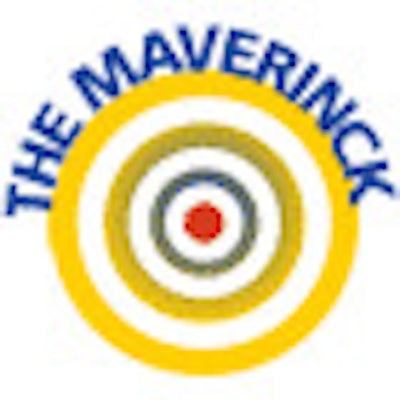
VIENNA - Some things never change, among them that people want or have to talk to other people in public. The European Congress of Radiology (ECR) is such an occasion.
Sometimes I watch the speakers before a session begins, and some remind me of myself -- when I was younger and had not yet learned the skills of speaking to a mass audience. Even if your contribution is only eight or 10 minutes long, you don't sleep well the night before. Your hands are sweaty, and you stare forlornly at the exit, feeling sick. You think about the meaning of life, and want to sit down, or better still, go to bed.
I don't want to pretend that I am the champion, the master of the conference lecture. However, there are minimum requirements everybody can learn and follow.
 Dr. Peter Rinck, PhD, Maître de Conférence/adjunct professor of medical imaging at the University of Mons, Belgium.
Dr. Peter Rinck, PhD, Maître de Conférence/adjunct professor of medical imaging at the University of Mons, Belgium.For starters, nobody likes to give a talk in front of a group of people, at least I haven't met anyone who does. A little stage fright is fine; adrenalin wakes you up. Don't have two or three cups of coffee before a talk. That makes you nervous and increases other urges. A small whisky or a glass of wine can be good, but swaying from side to side or holding on to the lectern with both arms makes the audience wonder.
Golden rules for lecturing
- The audience is not your enemy but your partner.
Some people have come to listen to you, others because they talk before or after you, some to sit in the semidarkness to close their eyes and sleep. Stand straight behind the lectern; face your crowd -- and not the screen with your slides. Perhaps even smile a little bit -- and imagine in front of your inner eye how the people in the auditorium look in their underwear. It's a relaxing thought, as good as a glass of wine.
- Be dressed for the occasion.
A five-day beard and pants that look as if you have slept in them for the same period don't make a good impression; nor are high heels and an evening dress the fitting items for the day.
- Know the topic you talk about.
If you don't feel secure, ask your peer to sit in the room, so that he or she can answer any question you don't feel comfortable with. A good head of a department will not leave a newbie in the lurch. He or she will accompany a department newcomer into the auditorium -- or show up later and sit in the back.
I remember lectures by a politically very successful professor of radiology who had his talks written by people from his department or companies. Sometimes he couldn't pronounce some of the technical terms. It attracted attention but not the right kind.
You should always have a manuscript for lectures with time constraints; then you stay within the given time limit. Type it in a way that is easily readable even in the twilight of the stage. Don't use the language of a scientific paper; on the other hand, don't be too colloquial. Rehearse the talk. You don't have to know it by heart -- although it might help. Find out how to pronounce words you are unsure about and have your English checked by somebody who knows. Nobody cares whether you have an accent as long as the contents of your lecture are good and people can understand you. This also means: Speak up and don't mumble. Talk into the microphone. Practice how to react when you have a slip of the tongue. It doesn't matter. Just correct yourself and continue at ease. Stay with the text you have; don't try to suddenly add anecdotes or further explanations. You will be lost and your audience too.
Always travel with two copies of your presentation or put a copy on the Web so that you have a backup. In the auditorium, the light on the lectern will be broken, the laser pointer won't function, adapters won't fit, your slide presentation will be interrupted or belong to another speaker's talk, and a video sequence won't start. Don't try to solve technical problems during your talk. Continue without slides if you can -- and have the chairman find a solution. If somebody in the first row talks on his telefonino, just stop your lecture and stare at him. Let's see what happens.
One slide per minute is enough; don't use more than 10 slides for an eight-minute lecture. Listeners can't digest the same amount of information as readers can and their thoughts are prone to wander off. Give them a road map at the start, and offer them directions to where you are during your lecture. Good slides are simple and clear; they contain fewer than five or six lines; use simple fonts such as Arial or Helvetica. Preferably, the background should be dark, the characters large and bright. Graphs and images should be simple. Do not put pictures of the citric acid cycle into your introduction or anywhere else into your talk. In general, the background should not resemble a flying circus.
The use of animations such as flying arrows and cartoon ducks walking across a slide is not recommended.
Editor's note: To read the Maverinck's first sketch click here.
The comments and observations expressed herein do not necessarily reflect the opinions of AuntMinnieEurope.com, nor should they be construed as an endorsement or admonishment of any particular vendor, analyst, industry consultant, or consulting group.











